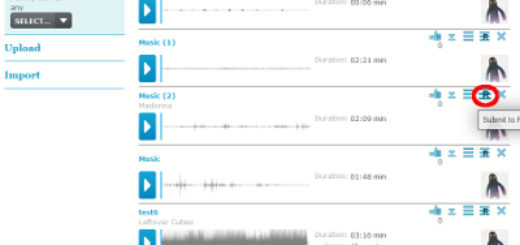Inside Track: What makes an award-winning campaign?

At the end of 2017 we shared with you that we’d had a spectacular year, capped off with accolades and awards for a number of our projects.
It got us thinking: alongside our music supervision services, what could we identify as the common elements of our most successful campaigns?
After delving into research sources and statistics, case studies, and anecdotes from leading creatives, it became clear that there is a wealth of knowledge to be found to answer this an other vital questions.
We decided to roll our finding out into a serious of posts we’re calling INSIDE TRACK: with each instalment we’ll deep dive into a particular topic that touches various parts of our industry. From Creative Directors to Production Producers, we aim to provide a cheat sheet for all of our findings.
So what is the key to standing out to awards committees and juries? Glad you asked…
Approach every campaign as if it were an award-winner
Studies show that campaigns that are awarded for creativity are, on average, ten times more effective than average in their messaging to consumers. As you plan and develop your campaign keep the phrase which is infamously emblazoned across the office and jury room of D&AD – “Good Is Not Good Enough!” close to mind. In order to stand out to win you need to go that extra mile and adopt a winner’s attitude.
Keep narrative at the heart of everything
The common element of almost all award-winning advertisements is the incorporation of narrative and storytelling elements. Emotion and storytelling remain key communication techniques and powerful marketing tools, regardless of delivery channels.
Stay original
While there will always be a place for traditionalism, award-winning campaigns regularly comprise elements that are rare or surprising, moving away from the obvious and commonplace. Campaigns that score high on the flexibility scale are seamless in linking the products advertised to a range of different uses or ideas. Creatively connecting to unrelated objects or ideas to create a divergent story line is a favoured tactic for awards juries.
Know the difference between inspiration and imitation
From the mouth of a high profile award jurist: “I’ve assessed a lot of entries that seem innovative at first, only to discover that the concepts were executed somewhere else in the world by other brands.” Be inspired, but always with your own spin.
Use data at every stage
Audience data is vital to the development of successful campaigns, but don’t limit yourself to preliminary research and post-activation assessment only. Pre-launch research is an important stage that is often forgotten about, but this will help track the campaign’s resonance with its target audience. Focus groups and interviews are the best way to gauge pre-launch success, allowing one last step to make any needed tweaks.
Take musical care
Music is a universally critical element of winning awards. Of the 56 Cannes award winners in Film, almost all of the contenders were narrative-based and two-thirds of those featured music. Music provides an additional opportunity to grab the attention of the audience, increase the persuasiveness of an argument and enhance the retention of information. Some studies advise that popular songs should be avoided, as they may draw attention to the song rather than the advertised brand, however known songs also have the advantage of their established histories, so may draw an emotional affinity to the advertised product.


